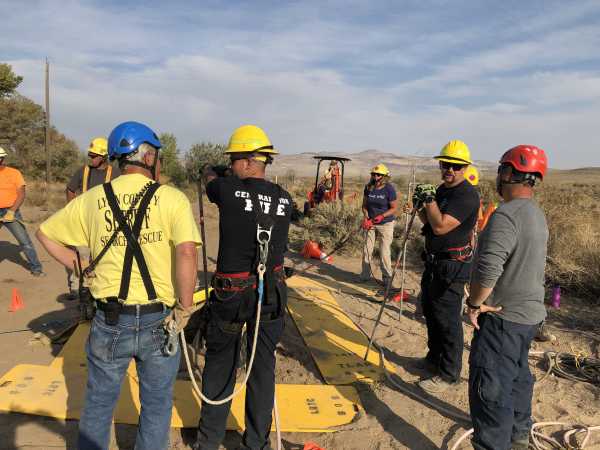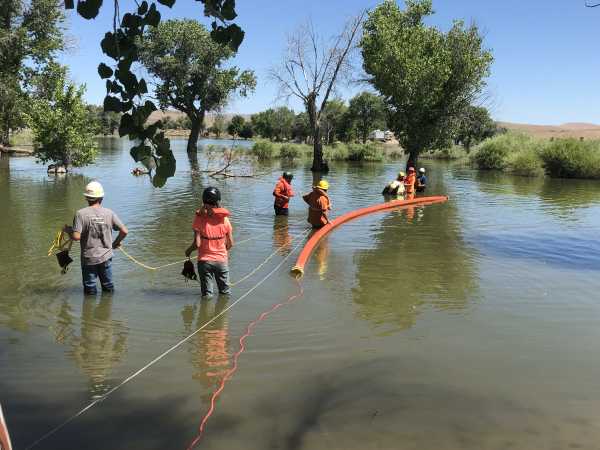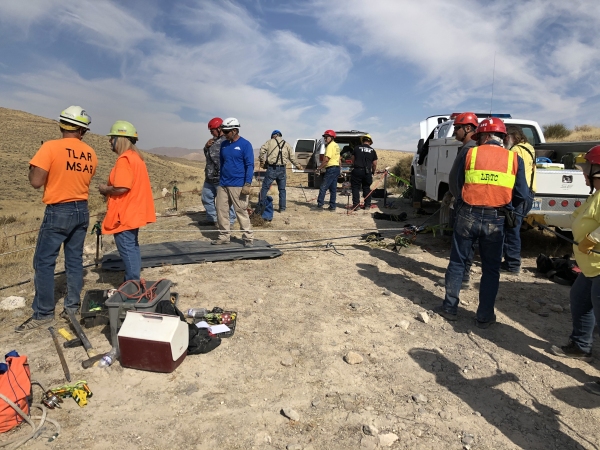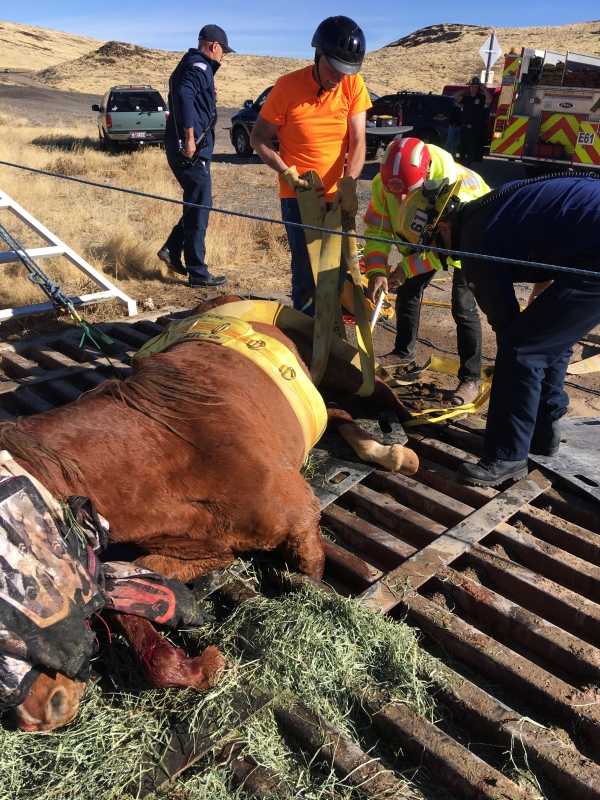
|
Least Resistance Training Concepts
|

|
TRAIN - PREPARE - SUCCEED
THE 2024 "IN PERSON" COURSES ARE LISTED BELOW.
Hosted by Least Resistance Training Concepts
EMERGENCY HORSE & LIVESTOCK HANDLINGEmergency techniques for handling horses and other livestockfor evacuations, removals from highways and escaped estrays. Exercises will utilize live animals.
April 6 and November 2, 2024, 0900-1400 (Additional classes will be scheduled) CLASS SIZES ARE LIMITED All classes muster at 11345 Silver Lane, Stagecoach, NV Willis Lamm, Wayne Woolway, Lead Instructors
The classroom presentations will be provided via Internet distance learning. "Hands-on" live animal handling will be held at the locations determined for the various course dates and will typically last from 3 to 4 hours. Everyone registered for this course will be contacted and be invited to attend in order of priority. If the date offered is in conflict with other activities, the participant can request another available date. The list below is for the "distance learning" elements available on the Internet.
Willis Lamm, Wayne Woolway, Lead Instructors Course objectives include safe handling elements, risk-analysis, best practices in creating loading chutes, sorting pens, using construction netting and other resources, introduction to new tools and techniques, with an emphasis on team building and team operations.
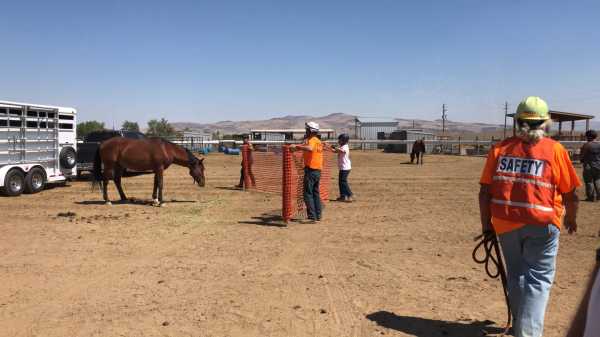
Since these courses involve live animals, the dates are subject to change if unsafe weather conditions are forecast. Please note the personal safety equipment required to participate as indicated further down this announcement.
There is a practical limit on the number of participants that these courses can handle.
TWO DAY HANDS-ON COURSE:
Operations level training for technical large animal rescue. |
| ADDITIONAL COURSE DETAILS |
EMERGENCY LIVESTOCK HANDLING
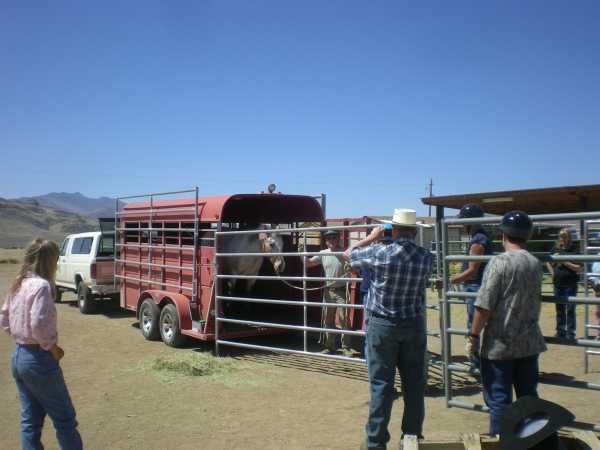
This course addresses emergency livestock handling, with an emphasis on horse handling, and includes best practices for managing, sorting, moving, containing, and loading large animals utilizing a variety of techniques.
The course emphasis involves effective teamwork when moving large animals, constructing containment and sorting corrals and loading chutes, and best practices for handling difficult animals.
Field objectives include rapid, safe evacuation techniques during emergencies, safe removal of livestock from highways, and recovering escaped (estray) livestock.
This course, or equivalent, is a prerequisite to receiving an operational level TLAR certificate for those taking the TLAR course.
Class size is limited. Priority will be given to public safety and animal control personnel, and volunteers associated with the Nevada Dept. of Agriculture, animal services agencies or BLM. All others will be first come-first served. (If interest significantly exceeds program capacity, an additional date may be scheduled.)
This course will involve handling live animals. The following personal protective equipment is required in order to participate.
- Helmet
- Work gloves
- Appropriate boots or work shoes
- Appropriate clothing (non-baggy shirt, long pants, etc.)
To receive a completion certificate you need to provide documentation of completing the on-line courses indicated .
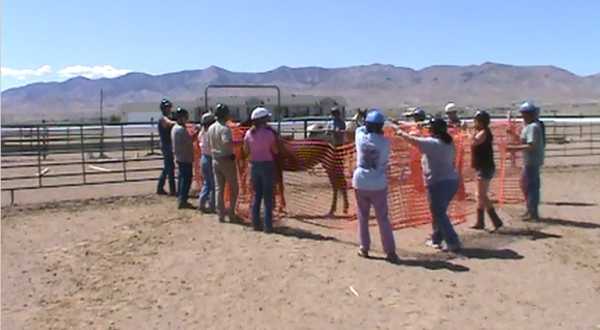
TECHNICAL LARGE ANIMAL RESCUE, OPERATIONS LEVEL
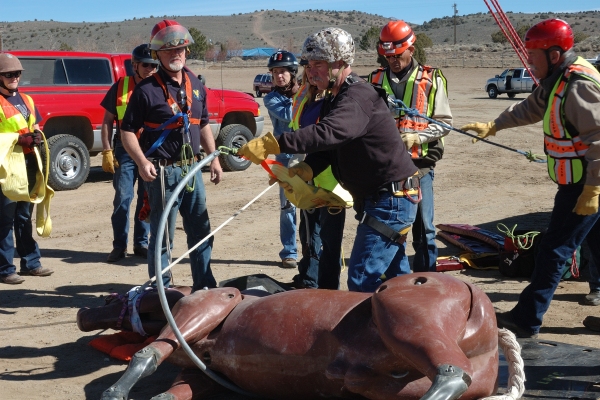
This course is an operations level course based on NFPA 1690 standards. In order to devote more time for practical exercise rescue scenarios, the large animal handling element of this level of instruction has been scheduled separately (see above.) In order to receive operations level completion certificates you will need to have also completed the large animal handling element or a recognized equivalent.
This course will cover a number of scenarios including, but not limited to transportation accidents (overturned trailer scenarios,) rescues from confined spaces, responses to equestrian accidents, "packaging" and transporting downed or injured horses, and various techniques that should be employed when responding to these incidents.
Course elements will including incident size-up, organizing rescue operations, strategic and tactical decision making, incident safety, and hands-on practice with a variety of technical rescue tools and techniques. Instruction and practical exercises will follow ICS protocols.
Class size is limited. Priority will be given to public safety and animal control personnel, and to volunteers associated with the Nevada Dept. of Agriculture, animal services agencies or BLM. All others will be first come-first served.
This course will involve working with rescue tools and equipment. The following personal protective equipment is required in order to participate.
- Helmet
- Work gloves
- Appropriate boots or work shoes
- Appropriate clothing (non-baggy shirt, long pants, etc.)
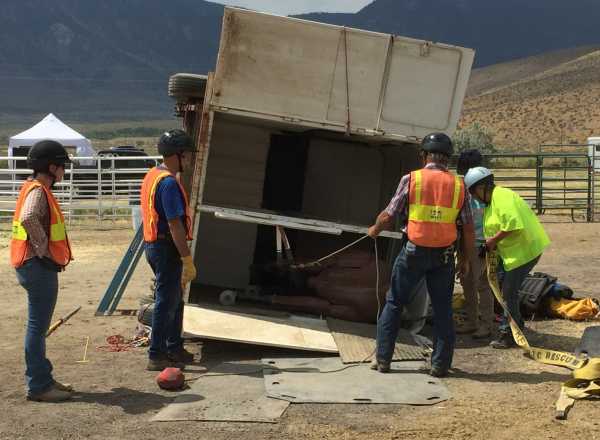
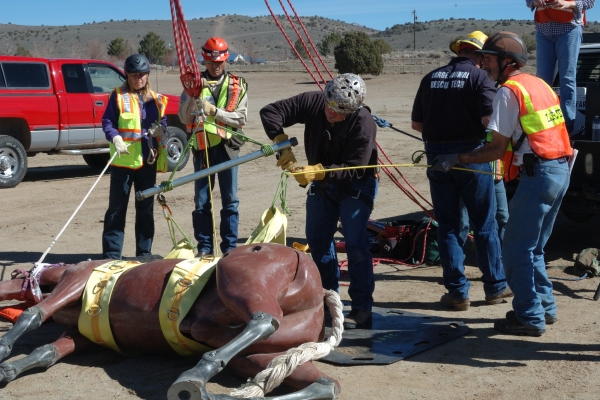
ROPE RESCUE SKILLS
|
Rescue scenarios will utilize rope rescue techniques.
Students should be familiar with:
Anyone needing to refresh on seldom used knots should visit Animated Knots by Grog. An overview of rope rescue equipment can be found Here. We can also schedule a rope rescue systems refresher session prior to the TLAR class if there is sufficient interest. |
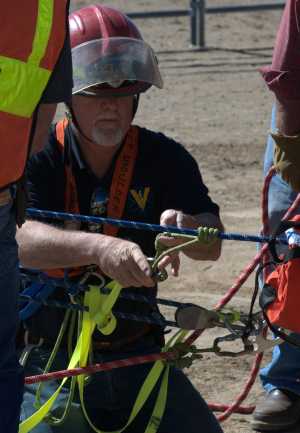
|
TECHNICAL LARGE ANIMAL RESCUE SYLLABUS
|
Areas of classroom instruction and hands-on skills practice will include (but are not limited to)
When real events happen, competent teamwork is the key.
|
Go to the Registration Form
Download a Printable Flyer
Return to LRTC Emergency Response Page

